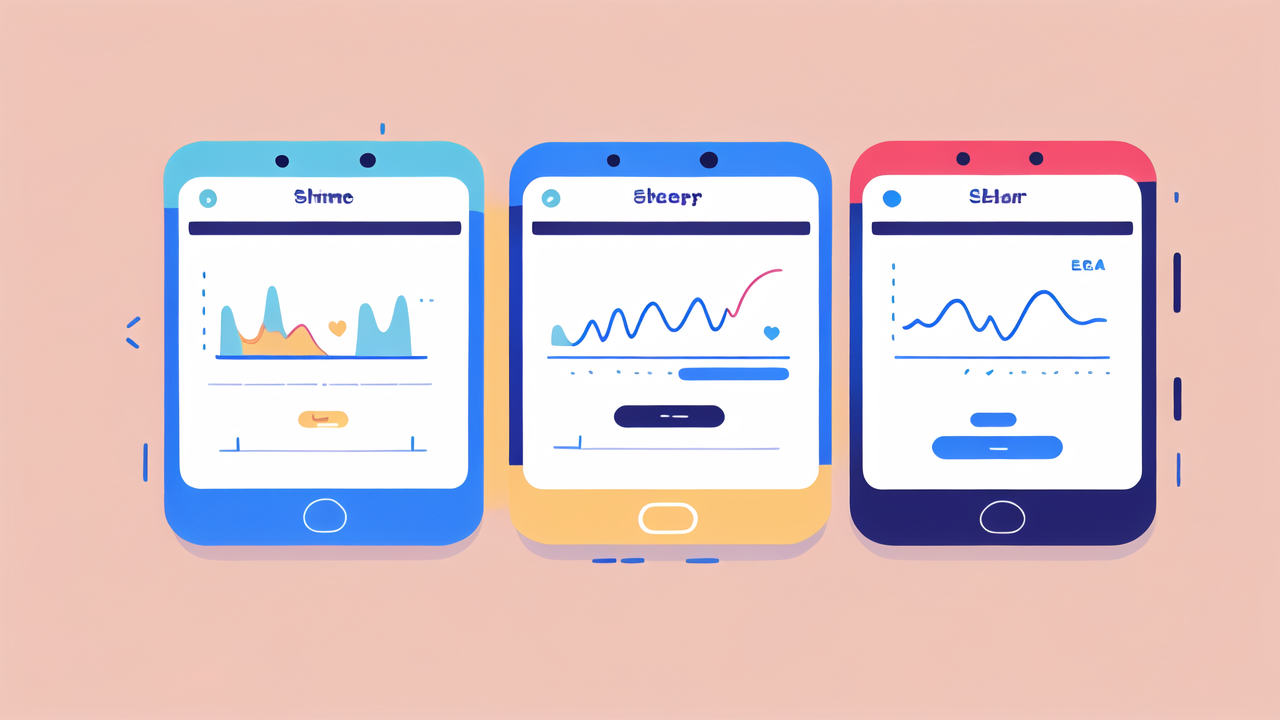Understanding the Role of Smartwatches in Health and Wellness
The Evolution of Smartwatch Technologies
Smartwatches have come a long way since their inception. They started as simple timekeeping devices. Now, they are powerful health monitors. Early models could count steps and track sleep. Today's smartwatches can measure heart rate, blood oxygen, and even ECG.

The evolution has been rapid and impressive. Newer models can detect falls and alert emergency services. Some can even measure skin temperature and stress levels. This progress has made smartwatches essential tools for health tracking.
As technology advances, smartwatches are becoming more accurate and useful. They now offer features that were once only available in medical settings. This makes them valuable for both everyday users and healthcare professionals.
Key Health Metrics for Consumers and Professionals
Smartwatches track several important health metrics. These are useful for both consumers and health pros. Here are some key measurements:
- Heart rate: Monitors cardiovascular health
- Sleep patterns: Tracks sleep quality and duration
- Step count: Measures daily activity levels
- Calories burned: Estimates energy expenditure
- Blood oxygen levels: Indicates respiratory health
- Stress levels: Measures physical and emotional stress
These metrics help users understand their overall health. They can spot trends and make lifestyle changes. For professionals, this data can aid in patient care and research.
Some advanced models can even detect irregular heart rhythms. This feature can be life-saving for those at risk of heart problems. The ability to track these metrics over time is invaluable for long-term health management.
The Impact of Smartwatches on Daily Lives
Smartwatches have changed how we approach health and fitness. They provide instant access to health data. This encourages users to be more active and health-conscious.
Many people now rely on their smartwatches for daily motivation. They set fitness goals and track their progress. The devices remind users to move, breathe, and stay hydrated.
Smartwatches also enhance communication and productivity. They allow users to receive notifications and respond to messages. This can be helpful in busy work environments.
For some, smartwatches have become essential health tools. They help manage chronic conditions like diabetes. Users can monitor their blood sugar levels and get timely alerts.
The impact extends to sleep habits as well. Many use their smartwatches to track and improve sleep quality. This focus on rest has led to better overall health for many users.
Evaluating Top Smartwatch Body Measurement Trackers
Comparative Analysis of Market Leaders
When it comes to smartwatch body measurement trackers, several brands stand out. Apple, Garmin, and Fitbit are among the top players. Each offers unique features and benefits.

Apple Watch leads in overall functionality and health tracking. It offers ECG, fall detection, and noise level monitoring. The device integrates seamlessly with iPhones, making it popular among Apple users.
Garmin excels in fitness-focused features. It offers advanced metrics for athletes. These include VO2 max estimates and recovery time predictions. Garmin watches often have longer battery life, appealing to outdoor enthusiasts.
Fitbit focuses on user-friendly designs and comprehensive health tracking. Their devices are known for sleep analysis and stress management features. Fitbit also offers a wide range of affordable options.
Samsung's Galaxy Watch series competes well in the Android market. It provides a good balance of smart features and health tracking. The rotating bezel design sets it apart from other brands.
Innovative Features that Set Smartwatches Apart
Modern smartwatches offer features that go beyond basic health tracking. Here are some innovative capabilities:
- Body composition analysis: Measures body fat percentage and muscle mass
- Skin temperature tracking: Useful for detecting illness or ovulation
- Blood pressure monitoring: Available on some models with proper calibration
- Mindfulness and meditation guidance: Helps users manage stress
- Women's health tracking: Monitors menstrual cycles and fertility windows
- Fall detection and emergency SOS: Provides safety for elderly or at-risk users
These features make smartwatches valuable for various health and wellness needs. They cater to different user groups, from athletes to those managing chronic conditions.
Some watches now offer built-in GPS and music storage. This allows users to exercise without carrying a phone. Others have contactless payment features, adding convenience to daily life.
Accuracy and Reliability: What Consumers Should Know
While smartwatches offer many health tracking features, accuracy can vary. Consumers should be aware of the limitations. Most devices are not medical-grade and should not replace professional care.
Heart rate monitoring is generally reliable during rest. However, accuracy may decrease during intense exercise. Factors like skin tone and tattoos can affect sensor performance.
Sleep tracking provides useful insights but may not be as accurate as clinical sleep studies. It's best used to identify general sleep patterns rather than diagnose sleep disorders.
Step counting is usually accurate, but calorie burn estimates can be less reliable. They are based on algorithms that may not account for individual differences.
Blood oxygen measurements can be helpful but are not as precise as medical pulse oximeters. Users should consult a doctor for any concerning readings.
Consumers should view smartwatch data as a general guide. It's useful for tracking trends over time. But major health decisions should always involve healthcare professionals.
Implementing Smartwatch Trackers in Personal Training Programs
Enhancing Training Regimens with Smart Technology
Smartwatches have revolutionized personal training programs. They provide real-time data that can enhance workouts. Trainers can use this information to create more effective plans.

Heart rate zones are a key feature for training. They help users maintain the right intensity during workouts. This leads to better cardiovascular fitness and weight loss results.
Recovery tracking is another valuable tool. It helps prevent overtraining by monitoring fatigue levels. This feature can reduce injury risk and improve overall performance.
Many smartwatches offer guided workouts and training plans. These can be customized based on user goals and fitness levels. They act like a personal trainer on your wrist.
GPS tracking in smartwatches is great for outdoor activities. It allows precise distance and pace measurements for runners and cyclists. This data helps in planning and improving routes.
Case Studies: Success Stories from the United States
Smartwatches have helped many Americans achieve their fitness goals. Here are a few success stories:
- John, 45, lost 30 pounds using his smartwatch to track calories and activity. He says the daily reminders kept him motivated.
- Sarah, a marathon runner, improved her time by 15 minutes. She credits her smartwatch's advanced training features for her success.
- Mike, 60, detected an irregular heartbeat with his smartwatch ECG feature. This led to early treatment of a heart condition.
- Lisa used her smartwatch's sleep tracking to improve her rest. She reports better energy and productivity at work.
- Tom, a personal trainer, uses smartwatches with all his clients. He says it helps them stay accountable and see progress.
These stories show how smartwatches can make a real difference in health and fitness. They provide the tools and motivation needed for lasting change.
Integrating Smartwatches into Fitness Business Models
Fitness businesses are finding new ways to use smartwatch technology. Many gyms now offer classes that integrate with members' devices. This creates a more interactive and personalized experience.
Personal trainers use client smartwatch data to tailor workout plans. They can track progress and make adjustments in real-time. This leads to better results and higher client satisfaction.
Some fitness apps sync with smartwatches to offer virtual coaching. Users can get professional guidance without the cost of in-person sessions. This has made fitness more accessible to a wider audience.
Corporate wellness programs are also adopting smartwatch technology. They use device data to create health challenges and incentive programs. This promotes a culture of health and reduces healthcare costs.
Smartwatches are changing the fitness industry landscape. They offer new ways to engage clients and deliver services. As technology advances, we can expect even more innovative uses in the future.




Leave a comment
This site is protected by hCaptcha and the hCaptcha Privacy Policy and Terms of Service apply.